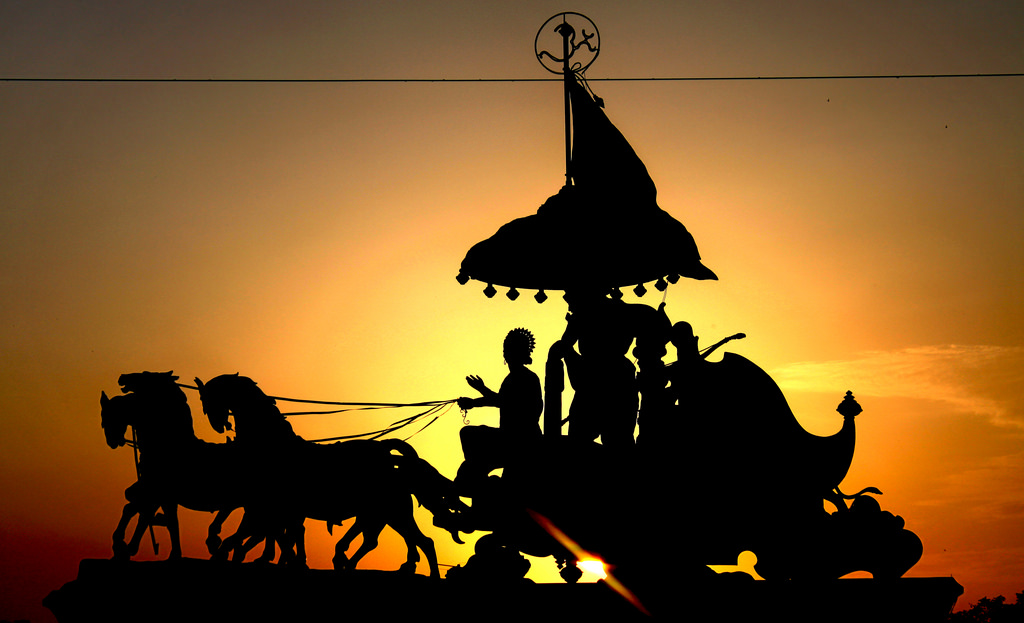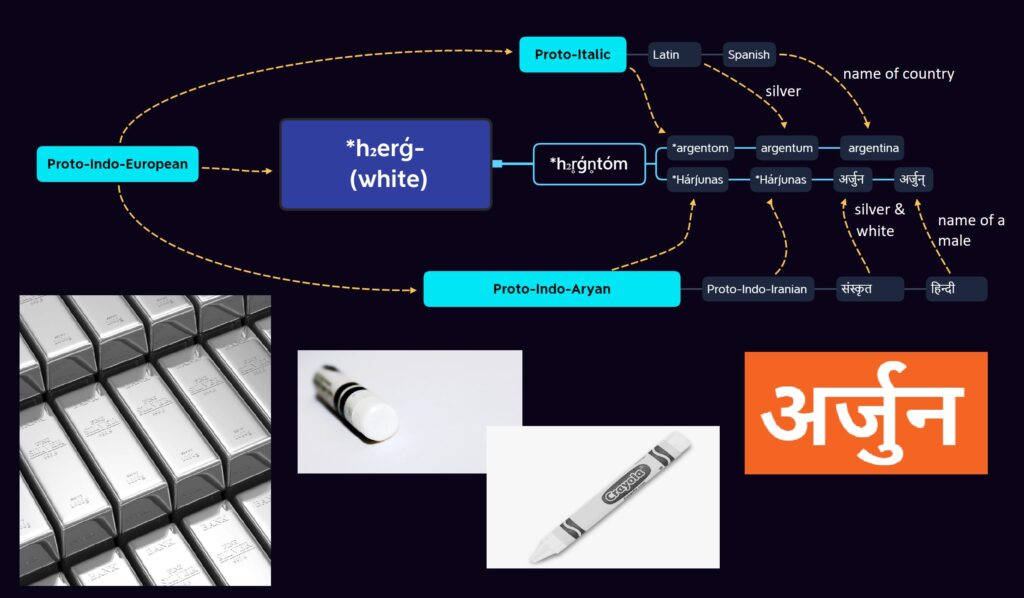
How are Argentina and the Mahabharata connected
Our story starts off around 5,000 years back in the central Asian steppes. Cattle-grazing tribes roamed the regions speaking a language that was the ancestor of Latin and Sanskrit. They had a word for silver: Arg (pronounced arj). A 1,000 years later, these farmers and grazers migrated to Europe and India. Their original language gave birth to Latin in Europe and Sanskrit in the Indian sub-continent.
Vedic Sanskrit evolved between 1500 – 500 BCE. Once Sanskrit became the language of the elites in this part of the world, an epic (actually, two) was written in the language. The epic spoke about five brothers who waged a war against their cousins for control of Bharatvarsh. The third among the five brothers was the greatest warrior the world had known then. His exploits were legendary. His bow had no second. He shone like silver or maybe his deeds were as shiny as the metal. In fact, his name was inspired by the metal: Arjuna.
Now, depending on the literature you read, the Kurukshetra War story occurred anywhere between 1400 BCE to 950 BCE. But was silver always called Arg?
Below is a diagram by itsmeyash31, a Redditor who had drawn out the etymology in 2020.

A key point to note here is that Proto-Indo-Iranian comes before Proto-Indo-Aryan. So Arg became Harjunas in Proto-Indo-Iranian and was carried by Proto-Indo-Aryan to the subcontinent. It evolved to Arjuna meaning silver or white. This name was bestowed on the Pandava for his amazing feats. Today, Arjun is a common name in India.
Let’s hop over to Europe now. Arg became Argentom in Proto-Italic and then Argentum in Latin, the language of the European elite. The Spanish traveled to South America to colonize the continent. And they voyaged along the Uruguay river and the Parana river that join forces and empty into the Atlantic Ocean.
This estuary (where freshwater mixes with the sea) is called the Río de la Plata or the Silver River. The region is named after the fabled silver mountain called Sierra de la Plata. The Spanish Conquistadores never found the mountain but the whole region around the Río de la Plata was rich in silver mines.
Side note: Plata was used as a noun for silver or gold. It’s Latin slang for sheets since silver was often made into sheets. Plata became slang for money. It’s the same for its English version: Plate.

Meanwhile the region that is today modern-day Argentina got its first mention in a Venetian map in 1536. It was named after the silver found in the region. In Italian and Venetian, Argentina means”(made) of silver, silver coloured”, derived from the Latin “argentum” for silver.
From Wikipedia: The first mention of the name “Argentina” was in Martín del Barco Centenera’s poem Argentina y conquista del Río de la Plata, con otros acaecimientos de los reinos del Perú, Tucumán y estado del Brasil, published in Spain in 1602.
This newsletter was inspired by Krish Ashok’s reel. He goes by @_masalalab on Instagram
And that is how, one of India’s best epics and a country on the other side of the world share a common connection: All because a bunch of farmers went one way and their cousins went the other way.
Let us know what you think about this newsletter. If you like it, please forward it to your friends and people you love. Ask them to click here and register for the newsletter.
So long, and see you next Wednesday.
Team Reading Room




